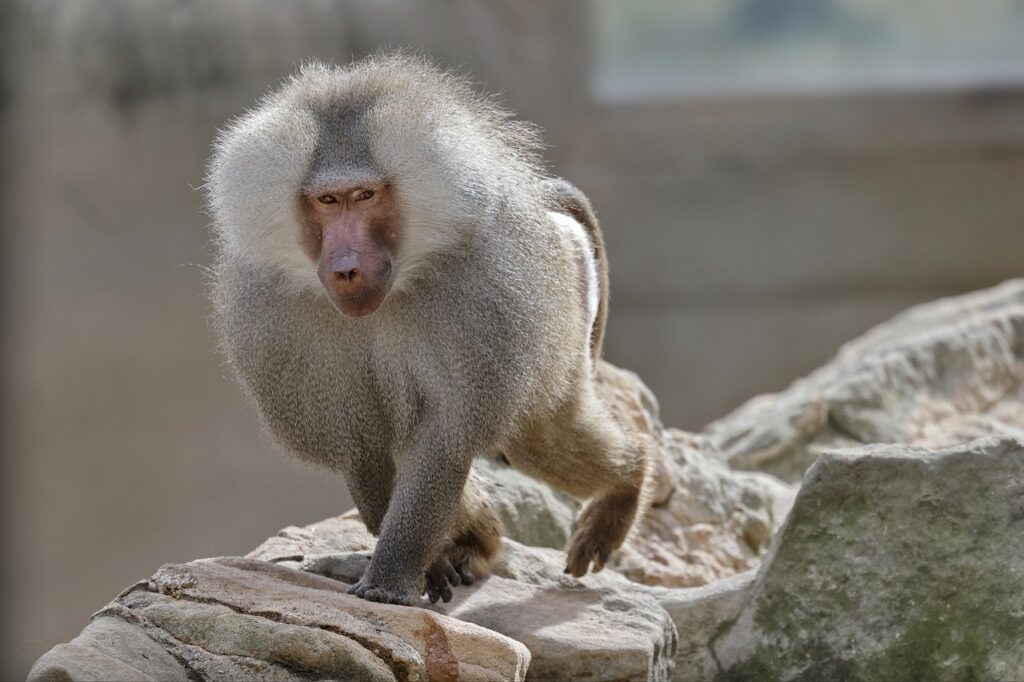Have you ever found yourself marveling at the sheer ingenuity of ancient survival tactics? Well, prepare to be astonished once more as we dive into a tale that bridges the gap between the natural world and human resourcefulness, epitomized by the clever use of baboons in locating vital water sources in the desert. This narrative is not just a testament to human ingenuity but also highlights the fascinating bond between man and beast, offering valuable lessons on survival, adaptation, and the intricate dance of nature’s ecosystems.
In the heart of the treacherous Kalahari desert, where water is more precious than gold, a scene unfolds that could very well be the definition of survival genius. We learn from the captivating nature documentary “Animals are Beautiful People” by Jamie Uys about a Bushman’s cunning method to secure the most crucial resource for survival: water. The documentary, which has left a lasting impression since its release, showcases how the Bushman, confronted by the vast and unforgiving expanse of the desert, turns to the local wildlife, specifically a baboon, to unravel the secret locations of water sources.
Baboons, known for their secret stashes of water, become the unsuspecting guides in this survival story. The method employed is as simple as it is effective; a deep hole is crafted in an old tree trunk, into which watermelon seeds are placed, sparking the curiosity of a baboon. As the baboon reaches in to grab a fistful of seeds, it finds itself trapped, unable to withdraw its clenched fist through the narrow opening. The Bushman then steps in, capturing the baboon with the intention not of harm but of mutual benefit.
The next phase involves leveraging the baboon’s natural instincts. By feeding it salt, which is scarce in the desert, the Bushman triggers an intense thirst in the animal. Come dawn, the once captive baboon becomes the Bushman’s guide to hydration, leading him to a hidden cave brimming with fresh water. This ingenious method not only underscores the survival instincts of the Bushman but also highlights a fascinating aspect of animal behavior and the symbiotic potential between humans and wildlife.

The principle of increasing thirst through salt consumption, interestingly, finds parallels in our modern-day experiences, such as the offering of free salted peanuts at bars to encourage beverage sales. This anecdote serves as a reminder of the primal instincts that govern much of our behavior and the intricate relationships that define the natural world.
The story doesn’t end with the quest for water in the desert. It opens up a broader conversation about the role of salt in our diets and its implications for health, particularly in relation to blood pressure and hypertension. The balance of salt and water consumption is critical for maintaining our body’s sodium levels, a delicate equilibrium that our kidneys manage. The consumption of salt leads to increased blood volume and, potentially, to high blood pressure, a condition that can have severe health implications.
This narrative not only entertains but educates, offering insights into the physiological responses triggered by salt and the importance of maintaining a balanced diet. It also sets the stage for a deeper exploration of dietary approaches to combat hypertension, such as the DASH diet, promising avenues for prevention and treatment that will be discussed in future articles.
The story of the Bushman and the baboon is more than a tale of survival in the harsh Kalahari desert. It is a vivid illustration of human ingenuity, the complex behaviors of animals, and the intricate interdependencies that define our world. As we marvel at the cleverness of the Baboon Salt Trap, we are reminded of the lessons it offers for both understanding our natural environment and navigating the challenges of our health and well-being. In the grand tapestry of life, such stories are threads that connect us to the past, inform our present, and guide us toward a future where the wisdom of the natural world continues to enlighten and inspire.
Related posts:
Urology Pearls: How to fool a baboon in the desert
What lessons can we learn from bushmen about money? The Baboon Salt Trap





